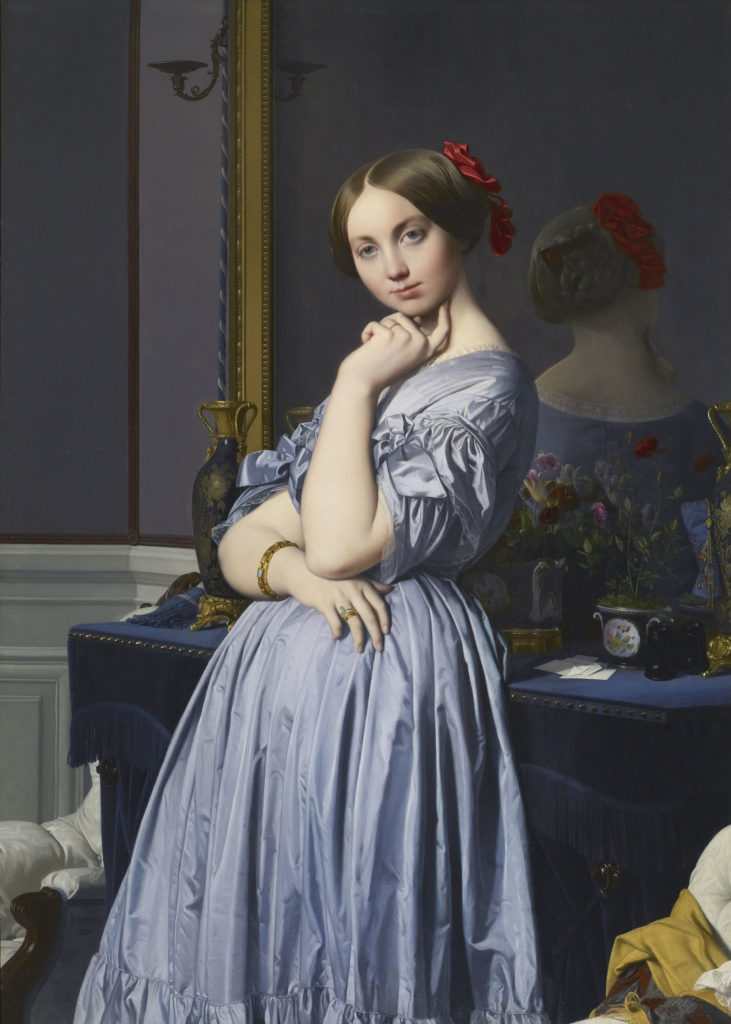In this occasional series, Fine Art Today delves into the world of portraiture, highlighting historical and contemporary examples of superb quality and skill. This week: Jean-Auguste-Dominique Ingres, “Louise de Broglie, Countess d’Haussonville.”
It’s hard to find an adequate place to begin a synopsis of Jean-Auguste-Dominique Ingres’ brilliant 1845 portrait of Louise de Broglie — a difficulty that, perhaps, echoes the obstacles encountered during its production. Indeed, every element within the portrait — from the subject’s pose, her stunning gown, and the flash of vermillion red in her hair, to the clever reflection in the mirror — is perfectly composed and executed with unrivaled mastery.

It appears as though we’ve stumbled into the intimate boudoir of the young Comtesse d’Haussonville. She coyly leans against an upholstered fireplace, having just discarded her evening wrap and opera glasses. She raises her hand to her cheek, softly touching her chin as if she’s wondering why you’re here. Ingres’ ability to capture a range of textures and colors in the portrait is simply breathtaking. One is immediately struck by the subject’s satin gown, which reflects a lavender sheen. Also noteworthy is the ribbon in her hair, reproduced in a brilliant red, which is repeated in her lips. The red adds a brief flash and highlight within a composition dominated by cooler tones of purple and blue.
Begun in 1842, this gem of a painting was not achieved without infamous trial and error. A great number of preparatory drawings, including full-scale studies, of the Comtesse survive today. In fact, Ingres produced individual drawings of the raised arm, the subject’s head, and the reflection in the mirror — suggesting the composition and pose presented the artist with challenging visual and perspective problems.
The painting has been owned by the Frick Collection since 1927, and the museum reports that a letter written by Ingres suggested that there were many fruits of his labor regarding this particular work and that the finished product “aroused a storm of approval among her family and friends.”
To learn more, visit The Frick Collection.
This article was featured in Fine Art Today, a weekly e-newsletter from Fine Art Connoisseur magazine. To start receiving Fine Art Today for free, click here.







